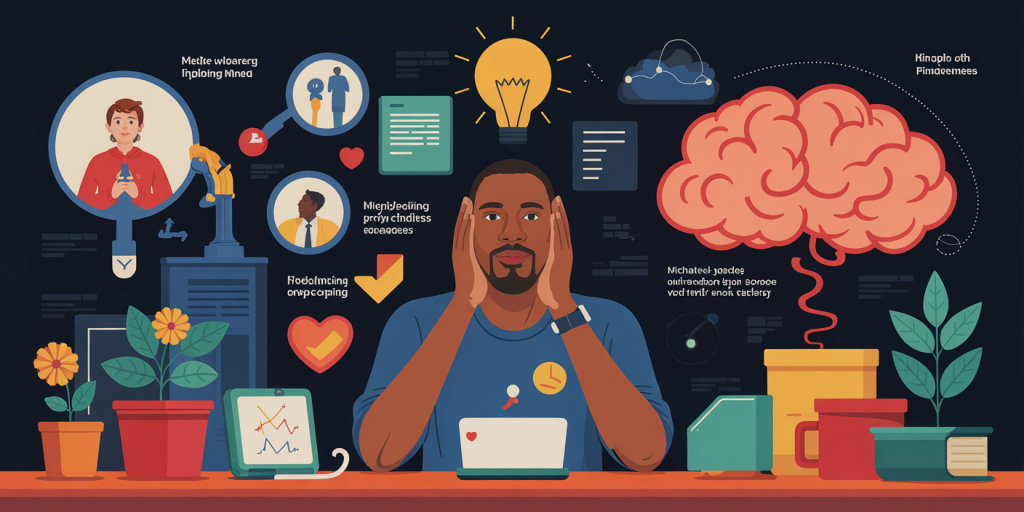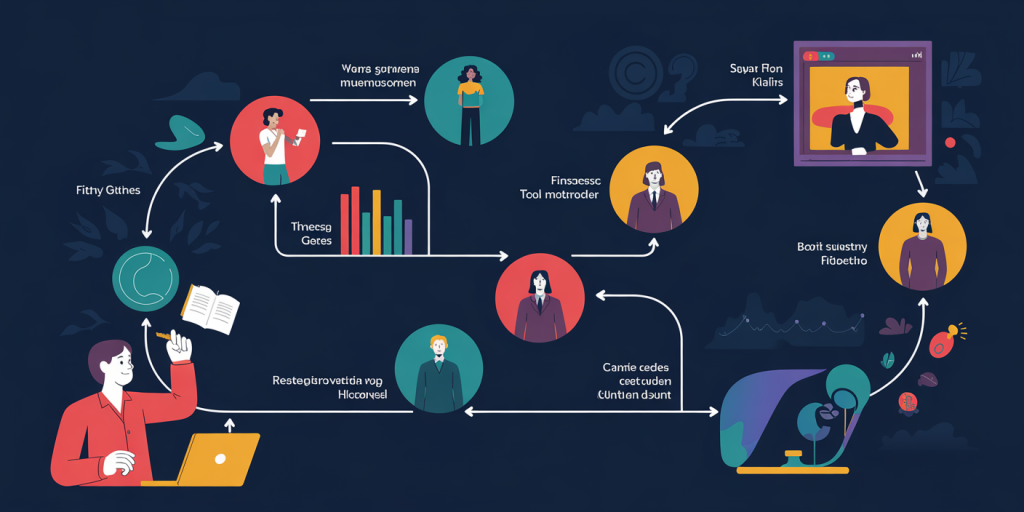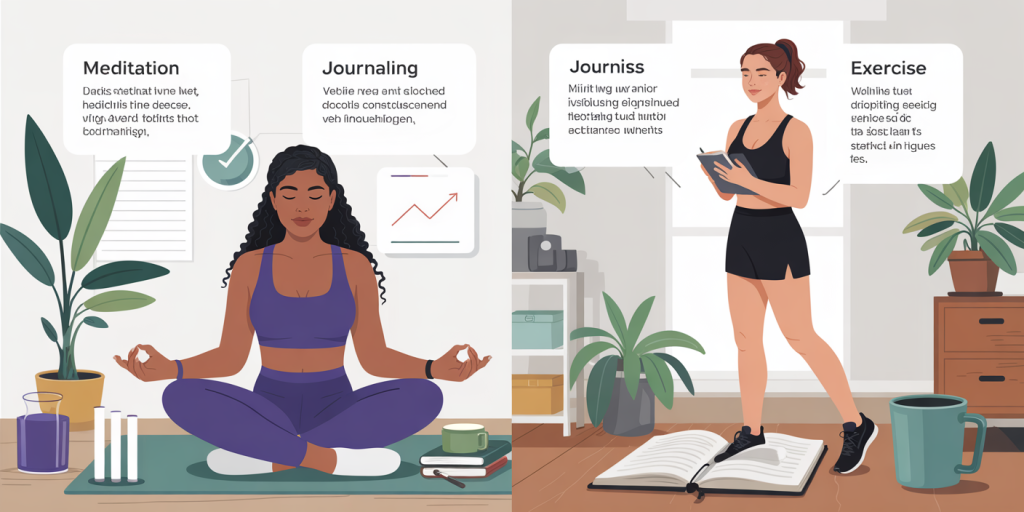Becoming the Best Version of Yourself: A Step-by-Step Guide
In a rapidly evolving world filled with distractions and challenges, the pursuit of self-improvement has become a priority for many. Becoming the best version of yourself is not about perfection but progress. It requires intentional actions, honest self-assessment, and a clear understanding of what that “best version” truly means for you. This guide will unpack practical steps, supported by real-world examples and data, to help you navigate your journey toward personal growth effectively and sustainably.
Understanding the Foundation: Self-Awareness and Mindset
Before embarking on any journey of self-improvement, cultivating self-awareness is critical. Self-awareness is the ability to introspect and recognize your thoughts, feelings, habits, and motivations without judgment. A study by the University of California found that individuals with high self-awareness tend to have better emotional regulation and decision-making skills, which are essential qualities for growth.
Mindset, a term popularized by psychologist Carol Dweck, plays a crucial role here. There are two types of mindsets: fixed and growth. Those with a fixed mindset believe their abilities are static, while those with a growth mindset understand that skills and intelligence develop over time through effort and learning. Embracing the growth mindset encourages resilience in the face of setbacks, making it easier to strive towards improvement.

For example, consider the case of renowned basketball player Michael Jordan, who was cut from his high school varsity team but used the experience as motivation to improve. His growth mindset allowed him to refine his skills tirelessly. Developing awareness about where you currently stand, and adopting a mindset focused on growth, sets a powerful foundation for meaningful progress.
Setting Clear, Achievable Goals: Roadmapping Your Improvement
Goal setting is the roadmap that guides your journey toward becoming your best self. According to research by Dr. Gail Matthews, a psychology professor at Dominican University, people are 42% more likely to achieve their goals just by writing them down. This tangible step crystallizes your commitment and provides clarity.
Begin with SMART goals—Specific, Measurable, Achievable, Relevant, and Time-bound. For instance, instead of saying “I want to be healthier,” set a goal like “I want to lose 10 pounds in three months by exercising five days a week and following a balanced diet.”

Practical case studies from corporate leaders demonstrate this approach well. Satya Nadella, CEO of Microsoft, emphasizes goal clarity within his teams, ensuring that every objective contributes directly to Microsoft’s larger mission. By breaking down goals into actionable steps, he fosters motivation and measurable success.
The table below highlights the difference between vague goals and SMART goals:
| Goal Type | Example | Characteristics |
|---|---|---|
| Vague Goal | “Get fit” | Not specific, no timeline |
| SMART Goal | “Run 3 miles 4 times a week for 2 months” | Specific, measurable, time-bound |
Setting clear goals provides direction and a sense of achievement as milestones are reached, reinforcing your commitment.
Developing Healthy Habits: The Building Blocks of Growth
Once your goals are defined, developing habits that support these objectives is essential. Research from the University College London suggests it takes an average of 66 days to form a new habit. Patience and consistency are critical during this period.
Habits act as automatic behaviors that conserve energy and willpower, allowing you to make progress in various areas more effortlessly. For example, if your goal is mental wellness, implementing a daily five-minute meditation habit can reduce anxiety by up to 20% after eight weeks, according to a study in the Journal of Clinical Psychology.
An effective method is habit stacking—linking new habits to existing routines. For instance, if you want to start journaling daily, do it right after your morning coffee. This association increases the likelihood of adherence.
Athlete Serena Williams showcases disciplined habits such as consistent training schedules and mindful nutrition. Her persistence in cultivating these routines leads to sustained excellence over her career. Emulating such discipline by embedding healthy habits into your daily life can significantly accelerate self-improvement.

Embracing Continuous Learning and Adaptability
The modern age demands that you remain adaptable and open to learning constantly. Lifelong learning fuels growth by expanding your perspective and skills. According to the Pew Research Center, 87% of workers say continuous learning is vital for career success.
Start by seeking knowledge through various avenues: reading books, attending workshops, or following industry leaders online. For example, Bill Gates reads approximately 50 books a year, attributing much of his success to his habit of consuming diverse knowledge continuously.
Case studies of companies like Google emphasize a culture of learning where failure is seen as a stepping stone to innovation. This mindset can be applied individually by treating mistakes as valuable lessons rather than deterrents.
Comparing traditional learning formats with modern digital methods:
| Learning Format | Advantages | Limitations |
|---|---|---|
| Traditional Classes | Structured, interactive | Fixed schedule, location-bound |
| Online Learning | Flexible, accessible globally | Requires self-discipline |
By staying adaptable and embracing new learning methodologies, you equip yourself to handle change gracefully and continue personal development regardless of circumstances.
Cultivating Emotional Intelligence and Relationships
Emotional intelligence (EI) is increasingly recognized as essential for personal and professional success. EI involves the ability to recognize, understand, and manage one’s own emotions while empathizing with others. Research published in the Journal of Organizational Effectiveness highlights that high EI correlates with better leadership, teamwork, and decision-making.
Improving EI starts with practicing self-regulation—managing impulses and emotions in challenging situations. Techniques like deep breathing and reflective journaling are effective tools. Additionally, active listening and empathy strengthen relationships, providing a support system that is crucial during transformative periods.
Real-life example: Oprah Winfrey credits much of her personal and professional success to emotional intelligence, particularly her ability to connect deeply with people from diverse backgrounds, allowing her to build trust and inspire change.
Improving emotional intelligence can make you more resilient and socially aware, paving the way for stronger relationships that encourage mutual growth.
Projecting Forward: Sustaining Growth and Evolution
Looking ahead, the journey to becoming your best self is dynamic and evolving. It requires regular self-reflection and adjustment of goals as you grow. According to a Gallup poll, only 15% of people worldwide strongly agree that they know what they are passionate about, emphasizing the importance of exploring and redefining your purpose continually.
Technological advancements like AI-powered personal development apps now help track habits, provide feedback, and set reminders, making it easier to stay on course. Meanwhile, mental health awareness is increasing, with resources widely available to support emotional well-being throughout your journey.
Future-oriented strategies include adopting flexible goal-setting frameworks like OKRs (Objectives and Key Results), which allow you to shift focus efficiently. Also, consider integrating mindfulness practices and digital detox periods to maintain balance amid increasing digital noise.
In summary, the pursuit of becoming the best version of yourself is a lifelong endeavor that blends self-awareness, goal clarity, healthy habits, continuous learning, and emotional intelligence. By embracing these steps with commitment and adaptability, you position yourself not only for success but for a fulfilling, purpose-driven life.
